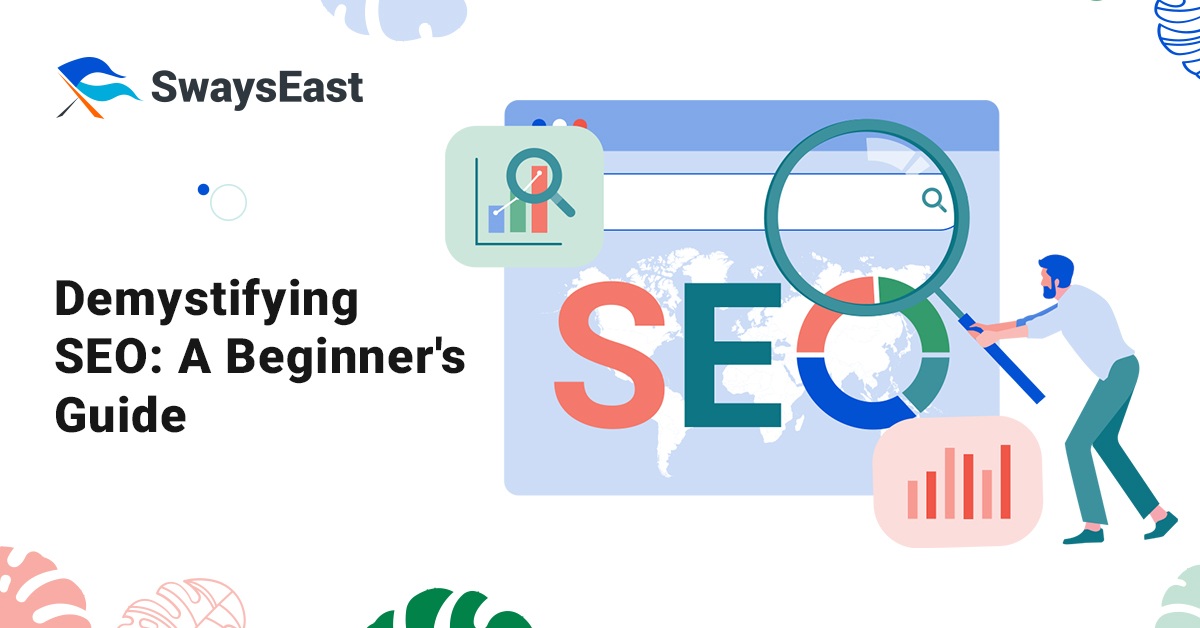Nobody can deny that search engine optimization (SEO) is a critical tool for improving a website’s visibility and driving organic traffic. But for beginners, SEO can feel complex and confusing. This guide will break down SEO step by step, making it easier to understand and implement.
What Is SEO?
SEO, or search engine optimization, is the process of enhancing a website so that it ranks higher in search engine results. Higher rankings typically lead to more traffic, which can translate to increased sales, brand awareness, and business growth. The key difference between organic search results and paid results is that organic traffic is “free,” though it requires time and strategy to achieve.
Why Is SEO Important?
The majority of online experiences start with a search engine, making SEO essential for businesses of all sizes. Ranking higher in search results increases your chances of attracting potential customers who are actively looking for the products or services you offer.
How Search Engines Work
Before diving into SEO tactics, it’s important to understand how search engines like Google operate. Search engines work in three primary phases:
- Crawling: Search engines use bots (also known as crawlers or spiders) to discover web pages. These bots follow links from one page to another, gathering information about the content they find.
- Indexing: Once the crawlers gather data, it is processed and stored in an index—essentially a giant library of web content that the search engine can pull from when users enter queries.
- Ranking: When you perform a search, the search engine’s algorithms analyze the indexed content to determine which pages are the most relevant to your query. Various factors influence these rankings, which we’ll explore below.
Key SEO Factors
While nobody knows the exact formula search engines like Google use to rank pages, certain factors are universally accepted as critical to improving your SEO.
1. Keywords
Keywords refer to the phrases and terms that users type into search engines. Proper keyword research helps you understand what your audience is searching for, enabling you to create content that answers their needs. Effective SEO begins with identifying and incorporating relevant keywords into your content.
2. Content Quality
Search engines show content that provides real value to users first. Pages that are informative, relevant, and updated regularly tend to rank better. High-quality content answers the searcher’s intent, engages users, and keeps them on your page longer, signaling to search engines that your content is valuable.
3. Backlinks
Backlinks refer to links from other websites to your own. They improve trust as they represent a vote of confidence from another site. The more high-quality backlinks your website earns, the more authoritative it appears to search engines, boosting your rankings.
4. On-Page SEO
On-page SEO means optimizing elements on your website that you control. This includes:
- Meta tags: Optimized meta titles and descriptions help search engines understand your page’s content.
- Header tags: Proper use of H1, H2, and H3 tags can improve the structure and readability of your content.
- URL structure: Clean, descriptive URLs make it easier for both users and search engines to understand your content.
5. Technical SEO
Technical SEO ensures that search engines can easily crawl and index your website. It focuses on elements such as:
- Site speed: Faster loading times provide a better user experience and makes sites rank higher.
- Mobile-friendliness: With more people browsing the web on mobile devices, it’s crucial to have a responsive website.
- Sitemaps: These allow search engines to discover and index all the important pages on your site.
Setting Up for SEO Success
Once you’ve grasped the basics, it’s time to set up your website for SEO success. Here are some key steps:
- Choose the Right Domain: Your domain name should be short, memorable, and ideally related to your business. If you’re starting a new site, opt for a trusted domain extension like .com.
- Use an SEO-friendly Platform: Popular website builders like WordPress offer SEO plugins that make it easier to implement best practices.
- Ensure Good Web Hosting: Choose a reliable host that ensures fast load times and secure browsing for users.
Getting on Google
It’s crucial to ensure your website is indexed by Google, as it’s the most widely used search engine. One effective method is to submit a sitemap via Google Search Console. A sitemap lists all the important pages on your website, helping Google discover and rank them more efficiently.
Tracking SEO Success
Once your SEO efforts are in place, tracking your progress is essential. Some key metrics to monitor include:
- Organic traffic: Use tools like Google Analytics or Ahrefs to track the amount of free traffic you’re receiving from search engines.
- Keyword rankings: Check how your target keywords are performing over time.
- Backlinks: Analyze your backlink profile to ensure you’re attracting high-quality links.
Conclusion
SEO may seem daunting at first, but by understanding how search engines work and focusing on essential strategies like keyword research, quality content, and technical optimization, you can set your site up for success. SEO is a long-term investment, but the results—consistent, free, and targeted traffic—are well worth the effort.
Want to use SEO to optimize your business? SwaysEast offers a suite of smart digital marketing tools to help brands create innovative solutions and experience their very own AI digital marketing success stories. Book a FREE APPOINTMENT today.

